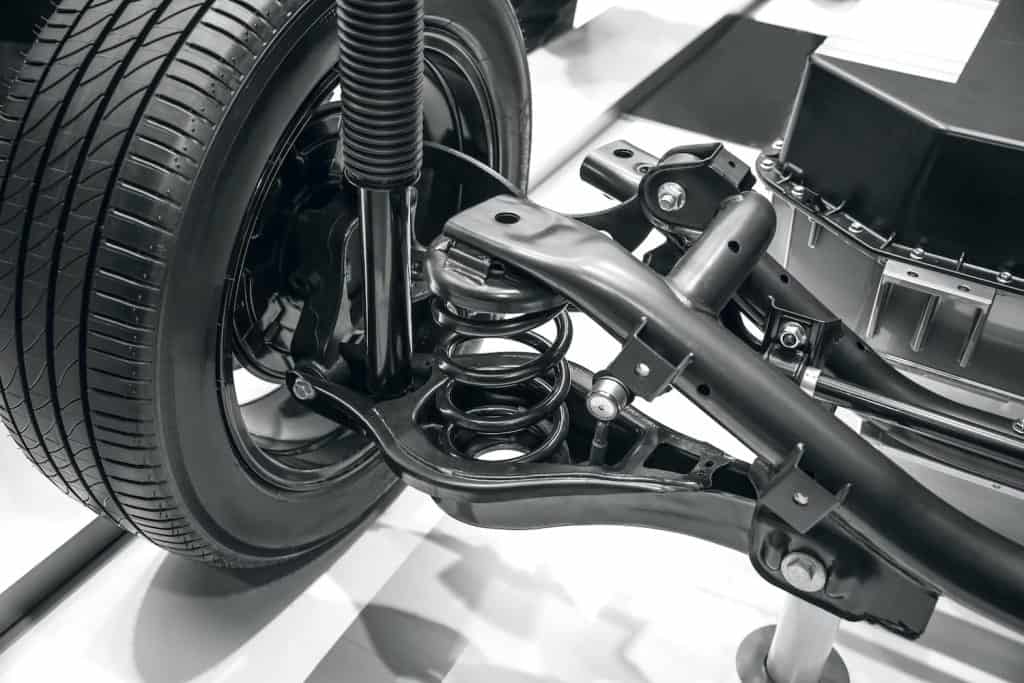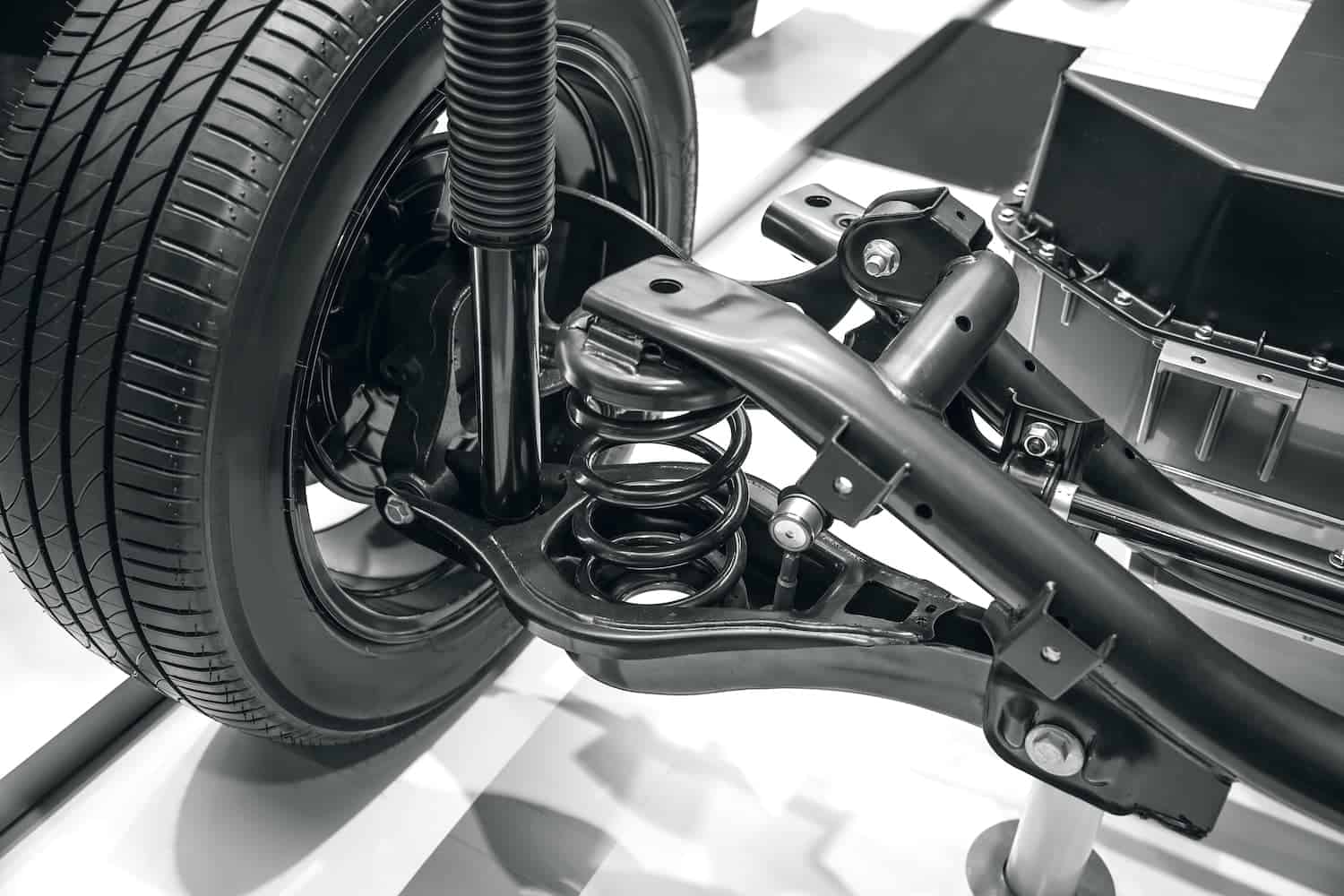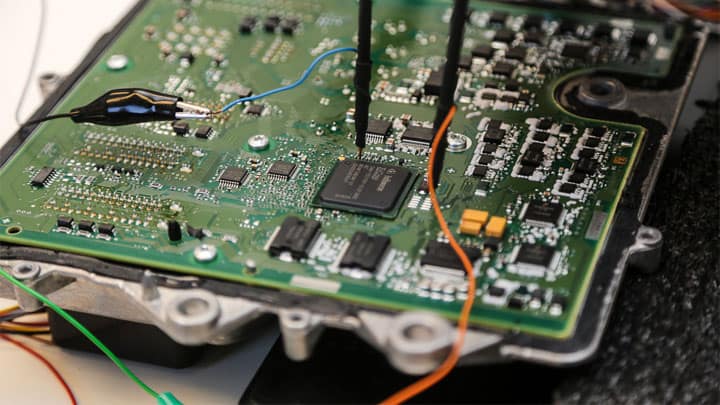The car suspension system is one such component that many car owners have largely overlooked in this article. It is a common misconception that the suspension system serves primarily to provide a comfortable ride. The car you drive is a giant machine consisting of several complicated elements, each of which contributes significantly to the driving experience. Every component of your car, including the very important engine, tyres, brakes, and air conditioning system, has been meticulously crafted by skilled engineers to serve a specific function. And your automobile is subject to wear and tear, just like any other machine.

But many people are unaware that the car suspension system also serves a variety of additional purposes, some of which are essential for your safety. A car’s suspension has several functions, from ensuring a safe turn to ensuring effective braking.
In this post, we’ll discuss the subtle symptoms that indicate your suspension system is going to fail. Nothing is above safety, so it is crucial to take note of this since it might result in an accident or other calamity. Look through these warning signals, and if you see any of them, get your technician to check them out.
Symptoms that your car suspension needs to be repaired or replaced
- A rough ride
Let’s start with the one that goes without saying: a smooth, bump-free ride depends heavily on the suspension. One of the main goals is to absorb the shock from the road and prevent the bounce that goes along with it. Absorbing the shock from the road and avoiding the bounce that goes along with it is one of the main goals. If the car jumps over every rock and speed bump and your driving becomes jerky, it may be time to inspect the suspension system.
This car suspension issue is typically brought on by using worn-out shock absorbers while driving. The primary duties of the shock absorber are to ‘absorb’ the shock and keep your car on the road. The road bumps, however, send your automobile soaring without any mechanism to bring it back to earth as they become weaker. The car’s performance continues to decline as it deteriorates, making it harder to maintain control.
- A challenge to handle
A car suspension issue can also be easily identified if steering is difficult, especially at low speeds. When this occurs, it is a clear sign that the vehicle’s suspension system is lagging. The steering and suspension systems in your automobile are interconnected, so if you have trouble controlling the vehicle, these two are typically to blame. Pay close attention to your steering since it has a big impact on your car.
There may be an issue with the steering due to old or slack belts, worn-out control arm bushings, insufficient power steering fluid, etc. Additionally, you can hear some screaming or whining, which is a sign that the power steering pump is malfunctioning. Visit a service center to get your automobile inspected so they can figure out the issue.
- Pulling and drifting to one side
Your car’s propensity to pull to one side or drift when you are driving straight is another important indicator of a worn-out suspension system. You may counter that this could also be caused by issues with the tyres, brakes, or even the steering, all of which are valid arguments.
However, driving a car that is not under your control is just as risky. After ruling out every possibility, move toward the area that needs repair. Let’s look at your options for doing this. Primarily, check the pressure on your tyres. The majority of the time, the issues are brought on by underinflated tyres. Examine the tyres closely to assess their level of wear and tear. Get that done as well if they haven’t been rotated in a while. Although this is a fantastic solution, it is not the only one.
Another factor contributing to your cars apparent tugging to one side is wheel alignment. Your wheels experience a lot of deterioration as a result of striking holes, bumps, and other rash objects. Unchecked alignment is probably to blame for the automobile’s tugging and drifting, which might further increase tyre wear and tear. If the problem persists after you’ve examined your tyres and wheel alignment, it can be caused by a damaged tie rod, spring, or control arm. Drifting won’t be the only issue you have because of this; you’ll also lose control of the vehicle. Maintenance on the car’s suspension is due.
- The car sits low/nose dives
When your car is stored in the garage, pay attention to how it sits. If you find that it sits lower than usual, this might indicate a damaged spring. The clunking noise your automobile produces every time you pass a bump or make a turn can also be used to determine this. This is an indication of a suspension spring that is malfunctioning or possibly damaged and unable to withstand the weight of the vehicle.
If you overlook this issue, the shock absorber will be under additional strain and will also see early wear and tear. Similar to this, you may have noticed that using the brakes causes you to be thrown into the dashboard. Shocks and struts prevent you from nosediving forward as the vehicle’s weight is transferred to the front while braking. A nosedive and more jerks than normal will result from worn-out struts. Additionally, if the weight transfer of the automobile to the rear is uncontrolled and you lean back when accelerating, you can identify this problem.
- Faulty or greasy shocks
This is a quick and simple way to determine whether there are any problems with your suspension. The shocks and struts are easily visible if you can see them underneath the car. There is a significant probability that the fluid is leaking if they appear oily or greasy, which makes it impossible for them to work properly. Get an expert to look into this right now.
- The Bounce Test
The suspension bounce test is a great tool for assessing how well your suspension is working. Park your car and proceed to the front to do this. Push the hood a few times to make it bounce, then lean down on it with all of your weight. Watch the automobile after releasing the pressure. If it bounces more than twice or three times after you release it, your suspension is broken and has to be repaired or replaced. You may try this on your car’s rear as well.
We have now reached the end of the article. I hope you now know how to spot a damaged suspension system in your vehicle.
How to take care of your car suspension
Taking care of your car’s suspension is essential for maintaining a smooth and comfortable ride while ensuring the safety and longevity of your vehicle. Here are some tips to help you care for your car’s suspension
Regular Inspections
Schedule regular inspections of your suspension system by a qualified mechanic. They can check for any signs of wear, leaks, or damage to components such as shock absorbers, struts, springs, and control arms.
Drive Responsibly
Avoid rough driving, potholes, and road hazards whenever possible. Hitting bumps and potholes at high speeds can put excessive stress on your suspension system, leading to premature wear and damage.
Read more: How Potholes Affect Your Vehicle And How To Avoid Them
Maintain Proper Tire Pressure
Adequate tire pressure is crucial for proper suspension function. Check your tire pressure regularly and inflate them to the recommended levels specified in your vehicle’s manual. Incorrect tire pressure can affect ride quality and put unnecessary stress on the suspension.
Avoid Overloading
Be mindful of the weight you carry in your vehicle. Overloading can strain the suspension and lead to sagging or damage. Refer to your car’s manual for the maximum weight capacity and avoid exceeding it.
Slow Down for Speed Bumps
When encountering speed bumps or road humps, reduce your speed to minimize the impact on your suspension. Hitting them too hard can cause jolts and potentially damage the components.
Address Issues Promptly
If you notice any signs of suspension problems, such as excessive bouncing, uneven tire wear, or unusual noises while driving, have your vehicle inspected and repaired promptly. Ignoring these issues can worsen the damage and compromise safety.
Regular Wheel Alignment
Misaligned wheels can put unnecessary stress on your suspension system. Get your wheels aligned regularly to ensure they are properly adjusted according to the manufacturer’s specifications.
Maintain a Smooth Driving Style
Smooth acceleration, braking, and cornering can reduce stress on the suspension components. Avoid sudden and aggressive maneuvers that can strain the suspension system.
Lubricate Moving Parts
Some suspension components, such as ball joints and bushings, may require lubrication. Check your vehicle’s manual or consult a mechanic to determine if any parts need periodic lubrication.
Replace Worn Components
Over time, suspension components may wear out and require replacement. Follow your manufacturer’s recommended maintenance schedule and replace worn-out parts as needed to maintain optimal suspension performance. Remember, it’s always a good idea to consult your vehicle’s manual for specific maintenance instructions

